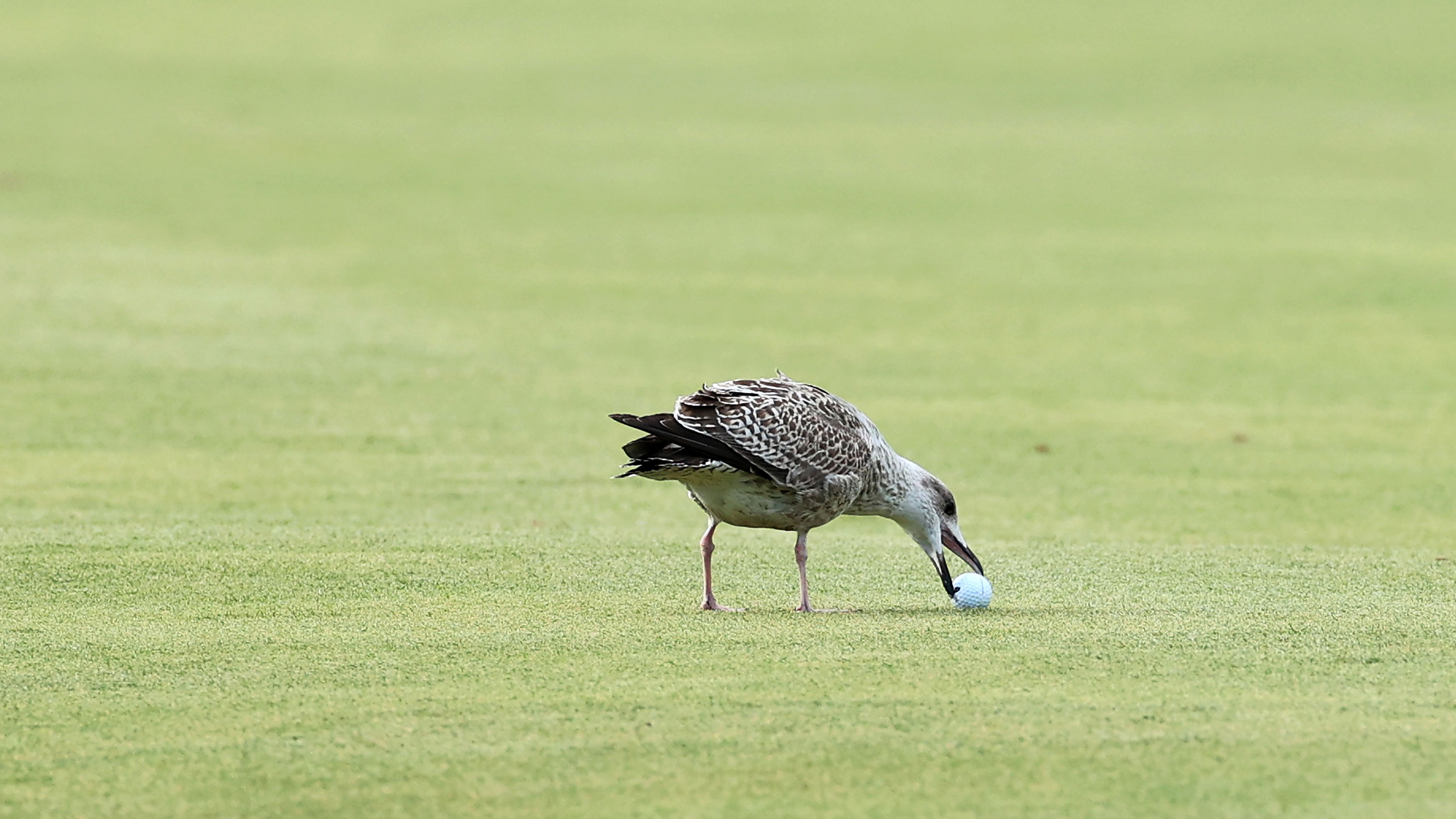
It might seem unlikely, but larger birds, seagulls in particular, can be attracted to static golf balls. They have been known to pick up a golf ball and fly off with it.
It happened to Brad Fabel in the 1998 Players Championship when a seagull had a couple of goes at picking up his ball from the famous island, par-3 17th green before flying off and dropping it in the water.
What should you do if that happens? Well, we’ll come to it, but let’s first have a general look at how The Rules deal with animal intervention on the golf course.
When it comes to getting relief from situations on the golf course involving animals, there are a few to consider.
First, one of the four defined conditions of abnormal course condition, from which there is free relief under Rule 16.1, is – animal hole.
An animal hole is defined as any hole dug in the ground by an animal, except holes dug by animals that are also defined as loose impediments, worms or insects for example. Insect holes or worm casts are treated as loose impediments.
You’ll also get relief from any worn-down track leading into an animal hole and from any earth kicked out or raised by the animal that dug the hole.
But it’s important to note, you don’t get a free drop from animal footprints that are not leading into the hole.
Next, dangerous animal conditions. Rule 16.2 deals with when relief is allowed from these. A dangerous animal condition exists when the ball is in a position where a dangerous animal (things like bees, snakes and bears) could cause physical harm to the player if they were to play the ball as it lies.
In those circumstances a player can take free relief under Rule 16.1. If the player’s ball is in a penalty area, they are still entitled to free relief from a dangerous animal condition, but only if they drop within the penalty area. Otherwise, they must take penalty relief as per Rule 17.1d.
If it is known or virtually certain that an animal (in this case a bird) has stolen your ball from the golf course and carried it back to its lair (or nest), you can proceed under Rule 9.6 – the ball has been lifted by an outside influence.
You must replace the ball on its original spot which, if not known must be estimated under Rule 14.2. If your ball can’t be retrieved, you can replace a substitute ball under Rule 14.2a.
If you know or are virtually certain that a bird has moved (but not stolen) your ball, you must move it back to its original or estimated original spot. If the animal has damaged your ball, you can replace it under Rule 4.2c.
There we have it - if a bird steals your ball, and you see it happening, you can place another ball where you estimate the original one to have been (with no penalty.)
If a bird moves your ball, you must place it back where you estimate it to have been originally. It’s an unlikely and potentially amusing scenario, but not one that will cost you shots!







